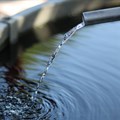How technology offers a very real solution to SA's aging water infrastructure

Furthermore, leakage detection remains a very real challenge with a report from the CSIR in 2018 stating that as much of a third of the country’s water supply is lost due to leakage and ageing infrastructure. Also, SA continues to deal with a dire energy shortage which means water infrastructure must operate in an optimised and sustainable manner.
Financially strained local municipalities must also heavily invest in their water infrastructure to upgrade and maintain it, unfortunately, in some instances, very little or no maintenance is done on plant and water networks.
Considering the above, what steps can be taken to alleviate some of the pressure posed by SA’s ageing water infrastructure? Technology has the potential to reduce operating costs while improving operational and energy efficiency, saving both water and energy.
That said, the use of technology must also be intentional and form part of a cohesive system of processes. For example, installing a new automation system is a good place to start but must, for example, be implemented in tandem with effective processes, designed to measure and improve operational value in real-time.
Technology also has the ability to reduce both energy and water usage, while also recovering and reusing water when utilised in wastewater, consumer packaged goods (CPG) plants and mining operations.
Leakage detection
As mentioned, a significant amount of water is lost due to leakage. However, this is not a problem unique to SA. The Anglian Water region in the East of the United Kingdom faced serious drought conditions compounded by significant population growth. To mitigate future water supply challenges, the water sector in England and Wales decided to implement an integrated leakage and pressure management solution (ILPM).
The system, for example, now enables Anglian Water to monitor its network on a daily basis and identify new leaks as it happens. The ILPM for example offers centralised data collection which in turn improves visibility of the network performance, resulting in greater efficiency as less time is spent processing data.
Ultimately, Anglian Water now benefits from a system that allows for improved planning and repairs at greater speed and efficiency, thus improving water savings and outperforming the leakage targets.
Saving water and energy with intelligence
There is a myriad of smart solutions available that has the potential to establish a water infrastructure that benefits from asset protection, cost savings, performance benchmarking, energy savings and increased safety. Technologies that enable these include sensors, intelligent motor protection, variable frequency drives, and advanced process controllers.
Assisting water stakeholders to manage their energy needs efficiently is a big step towards sustainability. Energy management, reducing consumption, and improved visibility of operations are therefore essential.
Likewise, reducing water losses, ensuring water quality and optimising the use of hydraulic and treatment infrastructure are crucial. Here, solutions can be implemented to optimise the pumping, and reduce energy consumption.
Intelligent pumping, for example, can take operations to a whole new level by capturing and analysing large amounts of data. These applications often communicate across multiple systems within a utility and enable the convergence of operational and business systems, which empowers operations, maintenance and management to make more intelligent decisions.
Technology realises ROI
With the right solutions in place, water infrastructure operators can save as much as 30% on energy consumption.
At a typical wastewater plant, power represents 35% of operational costs with 65% used in aeration processes. Experience shows that energy costs can be reduced by 3 to 5% if effective plant automation and control systems are implemented.
Also, the effective application of instrumentation and control systems can help increase the capacity of a wastewater treatment plant by up to 15%.



